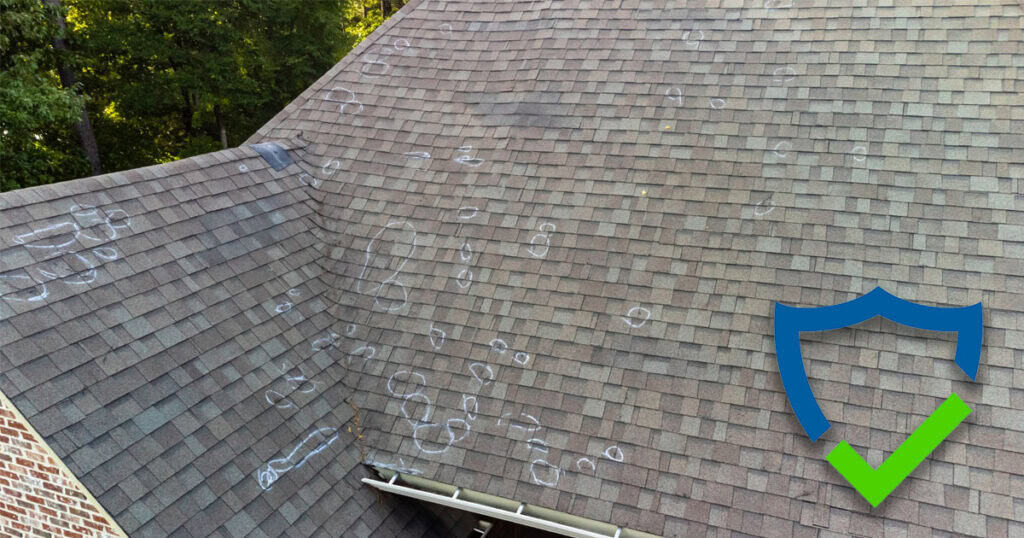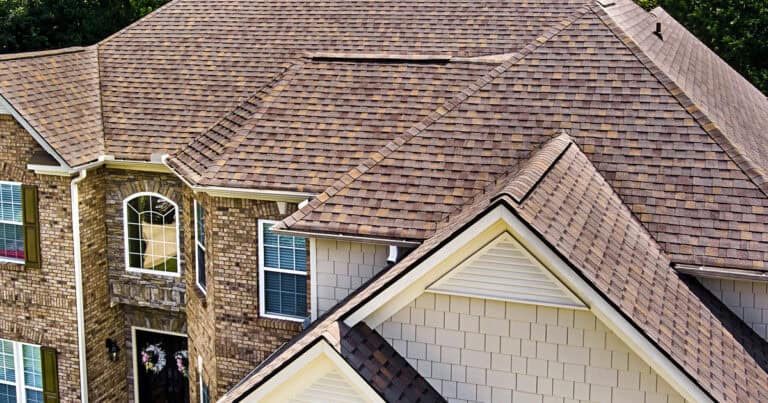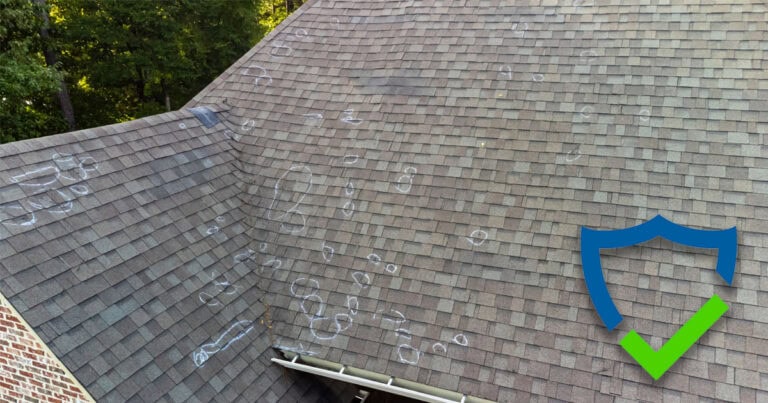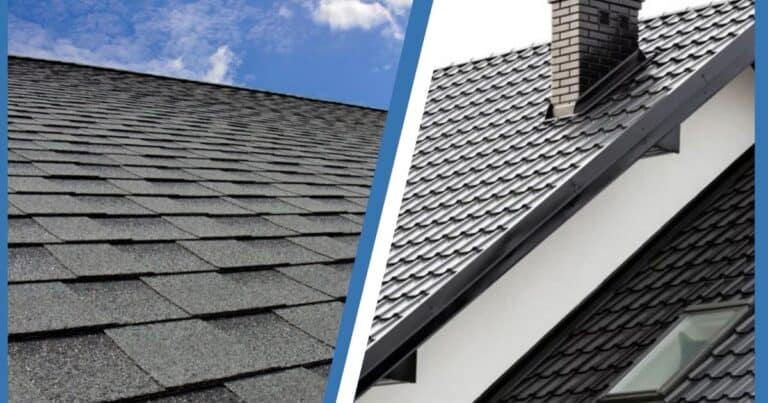
You’re getting ready for your evening routine when you notice a small water stain on your master bedroom ceiling—just a subtle discoloration that wasn’t there last month. It’s not actively leaking, but it’s definitely new. Your first thought? “Is this going to turn into something expensive?” We’ve seen this exact scenario play out hundreds of times in our years serving North Texas homeowners, and it’s always concerning. The reality? Most of these issues could have been caught early with a simple annual roof inspection.
Here’s the thing about roofs—they’re like that friend who never complains until they’re in serious trouble. By the time you notice problems, you’re often looking at major repairs instead of minor fixes. That’s why we at RidgeCore Roofing have made it our mission to help Frisco homeowners stay ahead of the curve with preventive roof maintenance that actually makes financial sense.
The Real Cost of Skipping Your Annual Roof Inspection
Let’s talk numbers because we know that’s what you’re thinking about. How much does an annual roof inspection cost compared to emergency repairs? The math is pretty eye-opening.
Average Annual Roof Inspection Cost in Texas:
- Basic inspection: $200-$400
- Comprehensive inspection with report: $300-$600
- Emergency repairs avoided: $2,000-$15,000+
We remember working with a client in Plano who thought he was saving money by skipping inspections. Three years later, what started as a $300 repair turned into a $12,000 roof replacement. Ouch.
Are Annual Roof Inspections Worth the Cost?
This is probably the most common question we get, and we’ll give you the straight answer: absolutely. Here’s why the investment pays for itself:
The Hidden Benefits You’re Missing
Early Problem Detection: Small issues like loose shingles or minor flashing problems cost $100-$300 to fix. Wait until they become leaks, and you’re looking at $1,500-$5,000+ in water damage repairs, according to the Insurance Information Institute.
Insurance Protection: Most insurance companies in Texas require documentation of regular maintenance. Without proof of annual roof inspection services, your claim might get denied faster than you can say “hail damage.”
Warranty Preservation: Many roofing warranties become void without professional inspections. We’ve seen homeowners lose thousands in warranty coverage because they skipped their yearly checkup.
What Your Insurance Company Really Wants to Know
Speaking of insurance, let’s address the elephant in the room: Will my insurance company require roof inspections? The answer is increasingly “yes,” especially in Texas where severe weather is our middle name.
Insurance Requirements Are Getting Stricter
After the massive hail storms we’ve experienced across North Texas, insurance companies are cracking down. Here’s what they’re looking for:
- Documentation of regular maintenance
- Professional inspection reports
- Proof of storm damage repairs
- Age verification of roofing materials
We’ve worked with hundreds of insurance adjusters, and they all tell us the same thing: homeowners with documented annual roof inspection records get their claims processed faster and with fewer disputes.
Timing Is Everything: When to Schedule Your Inspection
When is the best time to schedule an annual roof inspection? Great question! In Texas, timing can make or break your roof’s health.
The Perfect Inspection Schedule
Spring (March-May): This is our sweet spot. We’re assessing winter damage before summer heat amplifies problems. Plus, you’ll have time to make repairs before storm season hits.
Fall (September-November): Perfect for pre-winter roof inspection and catching any summer heat damage before cooler weather sets in.
Avoid These Times:
- July-August (extreme heat makes inspections dangerous)
- Peak storm season (April-June for severe weather)
The “My Roof is New” Myth
Do we need inspections if our roof is new? We hear this all the time, and the answer might surprise you. Even new roofs need annual check-ups, and here’s why:
New Doesn’t Mean Perfect
- Installation issues can surface within the first year
- Settling can cause minor shifts in materials
- Warranty compliance often requires professional documentation
- Weather damage doesn’t discriminate by age
We’ve caught installation errors on six-month-old roofs that could have voided warranties if left unchecked. A $400 inspection saved those homeowners thousands in potential warranty disputes.
What We Actually Look For During Your Annual Roof Inspection
Let me pull back the curtain and show you exactly what happens during a professional roof inspection. It’s way more thorough than you might think.
Our Comprehensive Inspection Process
| Inspection Area | What We Check | Why It Matters |
| Shingles/Materials | Cracking, curling, missing pieces | Prevents water infiltration |
| Flashing | Seal integrity, rust, displacement | Critical leak prevention |
| Gutters | Clogs, damage, proper drainage | Prevents water backup |
| Attic/Interior | Insulation, ventilation, moisture | Energy efficiency and mold prevention |
| Structural Elements | Sagging, damage, wear patterns | Safety and longevity |
The Details That Matter
During every inspection, we’re looking for subtle signs that most homeowners miss:
- Granule loss patterns that indicate UV damage
- Micro-cracks that expand with temperature changes
- Ventilation issues that can cut your roof’s lifespan in half
- Flashing deterioration around chimneys and vents
Time Investment: How Long Does This Actually Take?
How long does an annual roof inspection take? Most homeowners are pleasantly surprised by the answer.
Typical Timeline
- Visual exterior inspection: 30-45 minutes
- Attic and interior assessment: 15-30 minutes
- Documentation and photos: 15-20 minutes
- Report preparation: 24-48 hours
Total time on-site: Usually 1-2 hours max. We’re efficient because we know your time is valuable.
The DIY Temptation: Why Professional Inspections Win
Can we inspect our roof ourselves instead of hiring a professional? We get it—you’re handy, you’ve got a ladder, and you want to save money. But here’s the reality check you need.
The Risks of DIY Inspections
Safety First: Roofing is the most dangerous home maintenance task. Period. According to the Occupational Safety and Health Administration (OSHA), falls from roofs account for a significant percentage of construction fatalities. We have specialized equipment and training that keeps us safe.
Knowledge Gap: What looks fine to an untrained eye might be a disaster waiting to happen. We catch problems that would be invisible to homeowners.
Insurance Issues: Many insurance companies won’t accept DIY inspection reports for claims.
Legal Liability: If you miss something that causes damage, you’re on the hook. Professional inspections include liability coverage.
What You Can (Safely) Do
From the ground, you can watch for:
- Obvious missing shingles
- Sagging areas
- Clogged gutters
- Interior water stains
But for everything else, trust the professionals. Your safety and your wallet will thank you.
Prevention is Your Best Investment
What problems can annual inspections prevent? This is where the magic happens. Regular inspections catch issues before they become expensive nightmares.
Common Problems We Prevent
Water Damage: The average water damage claim in Texas is $7,500, according to HomeAdvisor. A loose shingle that costs $50 to replace can prevent all of that.
Structural Issues: Catching minor settling or damage early prevents major structural repairs that can run $10,000+.
Energy Loss: Poor ventilation and insulation issues can add $200-$500 annually to your energy bills.
Mold and Health Issues: Moisture problems caught early prevent costly remediation and health risks. The Environmental Protection Agency (EPA) emphasizes the importance of controlling moisture to prevent mold growth.
The Financial Logic That Changed My Mind
How do annual inspections save money? Let us share the calculation that convinced even our most skeptical clients.
The Math That Matters
Annual inspection cost: $400 Average repair prevented: $2,500 Insurance deductible savings: $1,500 Energy efficiency improvements: $300/year
Net annual savings: $3,900 ROI on inspection: 975%
Those numbers don’t lie. We’ve tracked this with hundreds of clients, and the pattern is consistent across North Texas.
Red Flags That Demand Immediate Attention
What are the warning signs that I need a roof inspection immediately? Some situations can’t wait for your annual schedule.
Emergency Inspection Triggers
- Water stains appearing on ceilings or walls
- Shingles in your yard after storms
- Daylight visible through roof boards
- Sagging areas anywhere on the roof
- Granules collecting in gutters excessively
- Energy bills spiking without explanation
If you notice any of these, don’t wait. Call us immediately for an emergency assessment.
Storm Season Strategy: When Weather Strikes
Should I get an inspection after severe weather? In Texas, this isn’t really a question—it’s a necessity.
Post-Storm Protocol
Immediate Assessment: Even if you don’t see obvious damage, hail and wind can cause micro-damage that compounds over time.
Insurance Timeline: Most insurance companies require storm damage claims within 1-2 years, as outlined by the Texas Department of Insurance. Don’t wait.
Documentation: Professional storm damage roof inspection provides the documentation insurance companies require.
The North Texas Reality
We experience some of the most severe weather in the country, according to the National Weather Service. Hail storms, tornadoes, and extreme temperature swings are hard on roofs. Regular inspections plus post-storm assessments are your best defense.
Age Matters: Adjusting Inspection Frequency
How can I tell if my roof is aging and needs more frequent inspections? Age changes everything about your roof maintenance strategy.
Age-Based Inspection Schedule
| Roof Age | Inspection Frequency | Focus Areas |
| 0-5 years | Annual | Installation quality, warranty compliance |
| 5-15 years | Annual | Wear patterns, material degradation |
| 15-20 years | Bi-annual | Replacement planning, critical repairs |
| 20+ years | Quarterly | Emergency prevention, safety issues |
Signs Your Roof is Aging
- Curling or cupping shingles
- Significant granule loss
- Multiple small repairs needed annually
- Energy efficiency declining
Insurance Claims: Your Inspection Investment Pays Off
Will regular inspections help with insurance claims? This is where proper documentation becomes your best friend.
How Inspections Strengthen Claims
Baseline Documentation: Regular inspections establish your roof’s condition before damage occurs.
Professional Credibility: Insurance adjusters trust professional inspection reports over homeowner photos.
Maintenance Evidence: Proof of regular maintenance shows you’re a responsible homeowner.
What to Ask Your Insurance Company
- Are regular inspections required for continued coverage?
- What documentation do you need for claims?
- Do you offer discounts for preventive maintenance?
- How often should inspections be performed?
The Competitive Advantage: Multiple Opinions
Should I get multiple inspection opinions? For major decisions, absolutely. But for routine annual roof inspection, one thorough professional assessment is usually sufficient.
When Multiple Opinions Make Sense
- Replacement decisions (get 2-3 estimates)
- Major repair recommendations over $3,000
- Insurance disputes requiring expert testimony
- Warranty claims needing professional backing
Your Next Steps: Making This Work for You
Here’s how to get started with a comprehensive roof inspection report that actually protects your investment:
What to Look for in Roof Inspection Services Near Me
Professional Credentials: Licensed, insured, and bonded Local Experience: Familiar with Texas weather patterns Comprehensive Reporting: Detailed documentation with photos Follow-up Support: Available for questions and clarifications
Questions to Ask Potential Inspectors
- How long have you been inspecting roofs in Texas?
- What’s included in your inspection report?
- Do you provide repair estimates?
- How quickly can you schedule an inspection?
- What’s your process for emergency situations?
Why We’re Different at RidgeCore Roofing
As a local roof inspection company serving Frisco and North Texas, we’ve built our reputation on thoroughness and honesty. We don’t just inspect—we educate.
Our Commitment to You
- Detailed written reports with photos and recommendations
- No-pressure approach to repairs and replacements
- Insurance assistance when claims are necessary
- Follow-up support for all maintenance questions
- Emergency availability for urgent situations
We believe in building long-term relationships, not just completing transactions. Your roof’s health is our priority, and we prove it with every inspection.
The Bottom Line: Your Roof, Your Choice
Annual roof inspection isn’t just about maintaining your property—it’s about protecting your family’s most significant investment. In Texas, where weather can change from beautiful to brutal in minutes, regular inspections aren’t luxury—they’re necessity.
The choice is simple: spend a few hundred dollars annually on preventive care, or risk thousands in emergency repairs and insurance headaches. We’ve seen both scenarios play out hundreds of times, and the math always favors prevention.
Ready to Protect Your Investment?
Don’t wait for that first drip to tell you something’s wrong. Schedule your annual roof inspection today and join the hundreds of North Texas homeowners who sleep better knowing their roofs are professionally maintained.
Contact RidgeCore Roofing for your free roof inspection estimate and discover what peace of mind feels like. Because when it comes to your roof, an ounce of prevention really is worth a pound of cure.
Your roof protects everything you care about most. Let us help you protect it.



